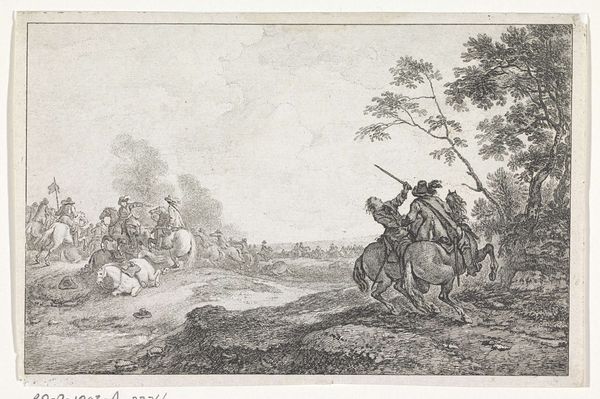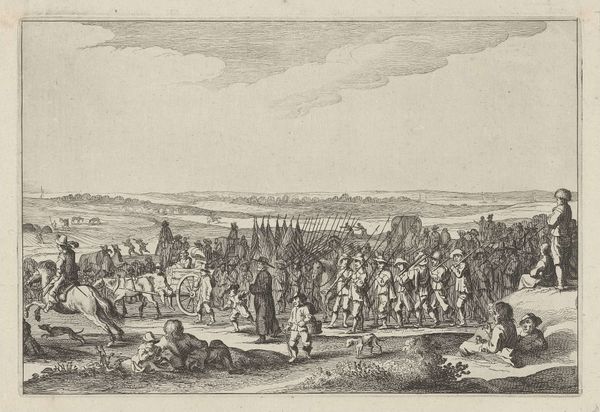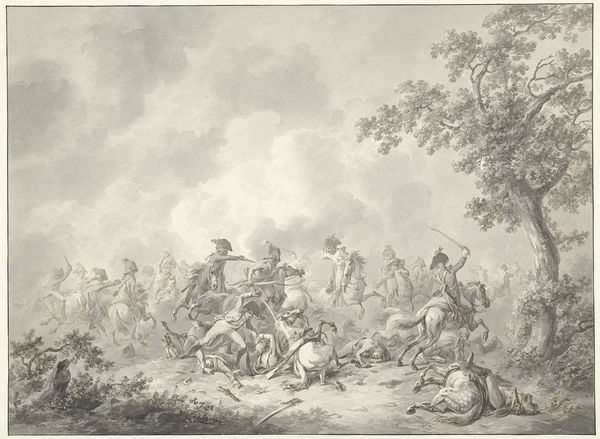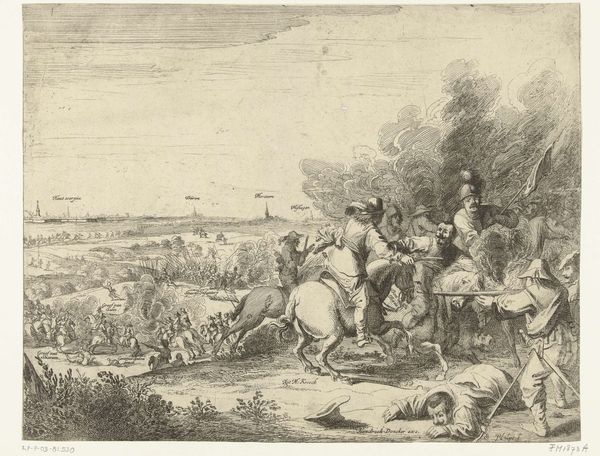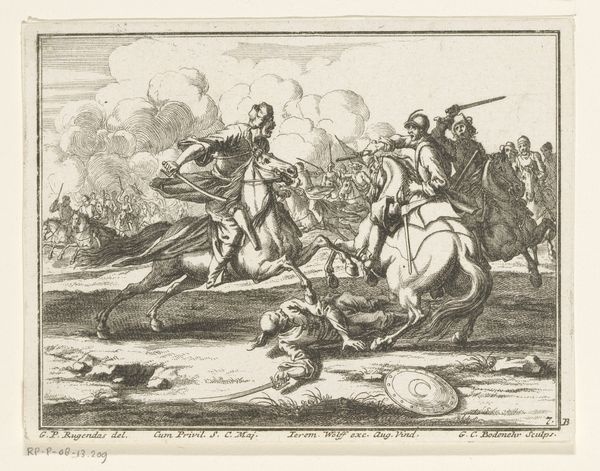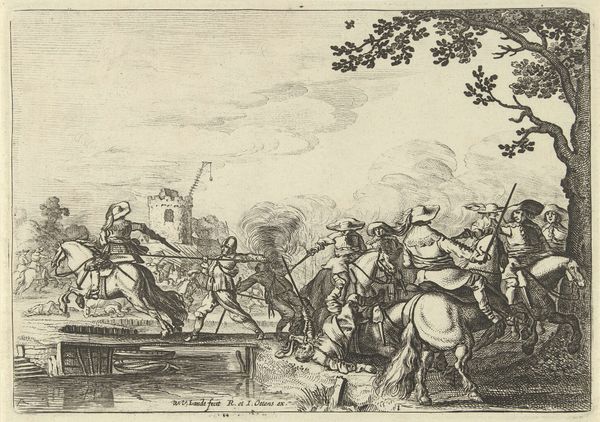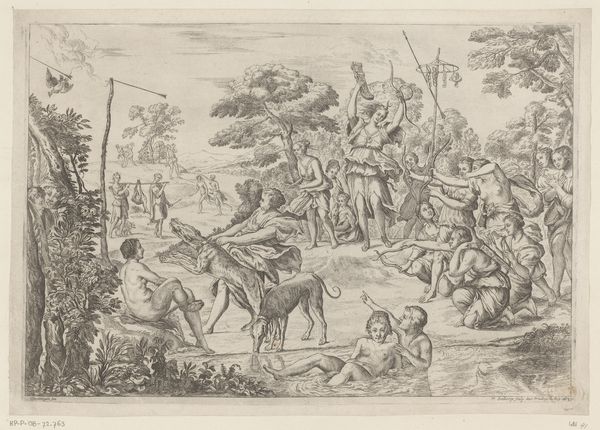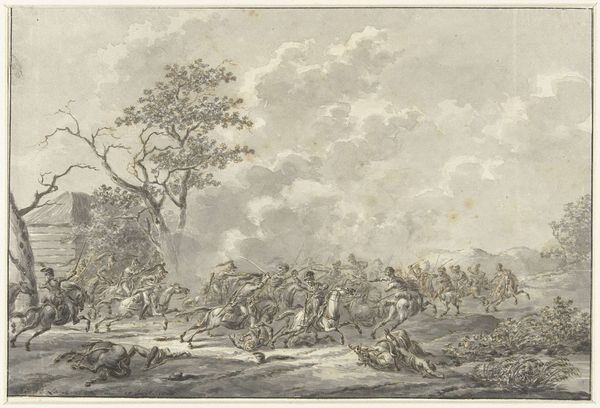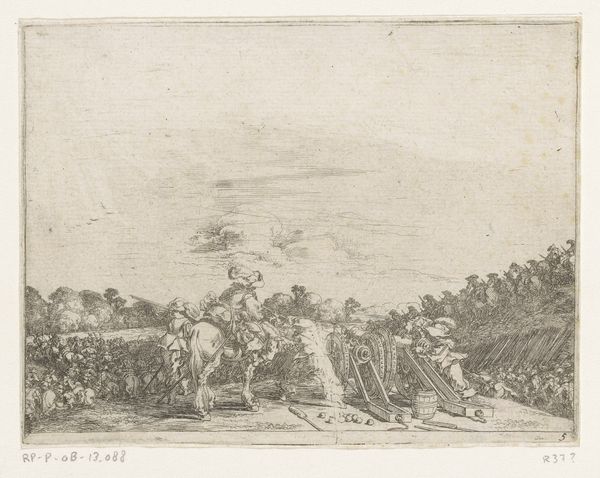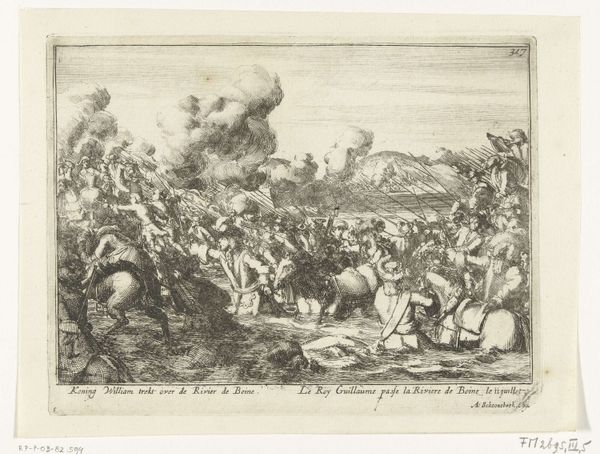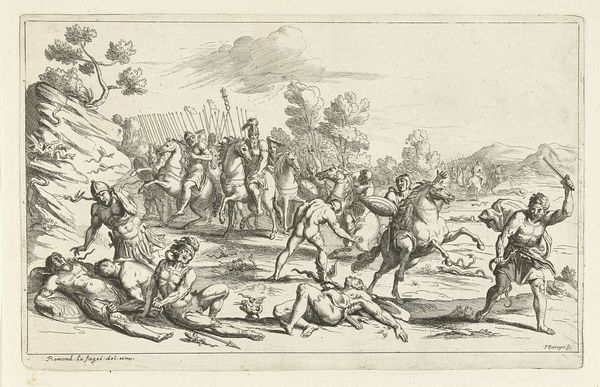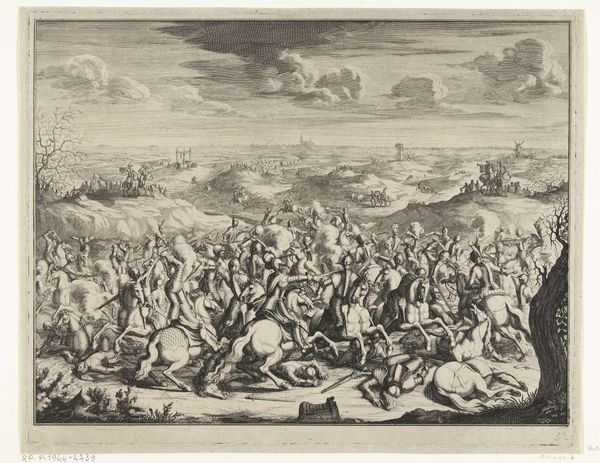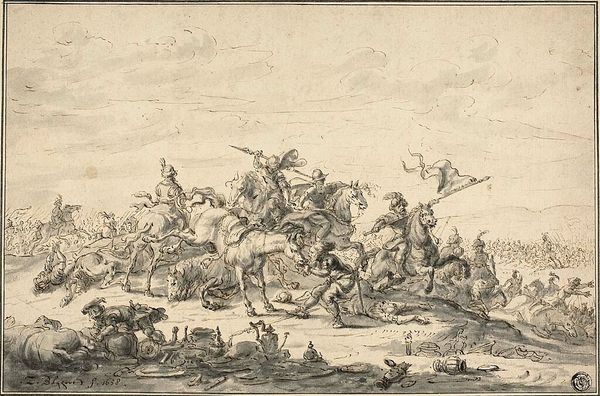
Gevangenneming van de Russische generaal Hermann tijdens de slag bij Bergen, 1799 1803
0:00
0:00
jacobernstmarcus
Rijksmuseum
drawing, print, engraving
#
drawing
#
narrative-art
# print
#
pen sketch
#
pencil sketch
#
landscape
#
pen work
#
history-painting
#
engraving
Dimensions: height 567 mm, width 750 mm
Copyright: Rijks Museum: Open Domain
Curator: Jacob Ernst Marcus created this engraving around 1803, titled "Gevangenneming van de Russische generaal Hermann tijdens de slag bij Bergen, 1799," or "Capture of the Russian General Hermann during the Battle of Bergen, 1799." Editor: It’s a whirlwind! My first impression is chaos; bodies strewn across the foreground, men advancing with rifles… A very active scene depicted in stark monochrome. Curator: Indeed. This piece depicts a key moment during the Battle of Bergen, part of the Anglo-Russian invasion of Holland in 1799. It’s interesting to see how Marcus uses this medium to represent a fairly contemporary event. This was, after all, a period of immense political and social upheaval, particularly here. Editor: I find the print medium fascinating here, especially the contrast. The fine lines of the engraving allow for intricate detail in rendering the figures' uniforms and equipment but, look closer, the land around is almost barren. It really emphasizes the militaristic production happening. This wasn't some glorious venture; you can feel it in the starkness of the print. Curator: Exactly, there’s a narrative being constructed. Engravings such as this had a life outside the gallery too: circulating among a public eager for information, but also for interpretations of recent events. We shouldn't overlook the power this image had to sway opinion, shaping the way the public viewed this campaign and those involved. Editor: Absolutely, the material process itself allows for dissemination to a much wider public, becoming part of a national consciousness. By producing it in print it gains accessibility. This image itself becomes a commodity – spreading awareness of a conflict alongside its complex socioeconomic roots. Look, for example, how laboriously those details have been crafted! It gives you an insight to that whole process and invites closer contemplation of not just the image itself, but of everything it stands for culturally, politically, economically – an insightful, complex image indeed. Curator: A thought-provoking print, and a strong example of how art captures the narratives and biases prevalent during periods of dramatic transformation and conflict. Editor: Yes, the method of production influencing not just form but the consumption of it as propaganda for wider circulation. Food for thought, indeed.
Comments
No comments
Be the first to comment and join the conversation on the ultimate creative platform.
